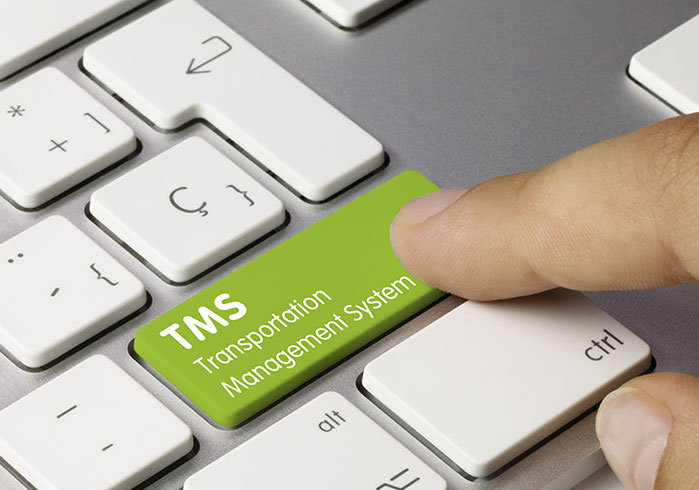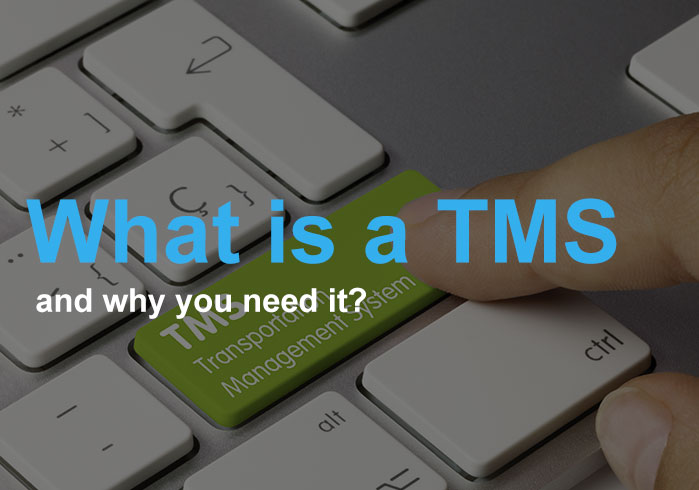
Regardless of the size of your business, you need a well-rounded understanding of your supply chain if you are to remain an effective shipper. It’s essential to be able to identify problem areas and respond to them accordingly with a consolidated, comprehensive, and accurate view of your supply chain.
One of the most effective tools for understanding your supply chain is a Transport Management System or TMS. It is particularly useful for gathering critical information about your network and its visibility. This article seeks to address the main issues that should be of concern to you from a core logistics point of view. The article will define what a TMS or WMS is, how its core functions operate, and the process of selecting an appropriate one for your business.
Transportation Management System (TMS): What Is It?
TMS is a software program or digital tool often utilized by companies to coordinate and manage their transportation and logistics. One rationale for deploying a TMS is that it organizes and centralizes transportation data. In this way, companies are better able to achieve the following operational functionalities:
- TMS allows you to forecast and plan your network requirements
- You can use TMS to optimize your selected routes
- Through the strategic use of TMS, you are better able to manage carriers
- TMS allows you to track and execute shipments
- Using TMS is one step towards automation of processes such as tendering and load booking
- TMS helps you to better handle your settlement and payment procedures
- Through TMS, you can report on your network key performance indicators
Shippers that have deployed a TMS provide better visibility to their operations while gaining a strategic overview of how well their network is doing.
Why You Should Use a TMS
TMS is a great investment for any shipper. Although you have to sink some financial resources into getting the system started, the rewards more than outweigh any downsides. TMS will help streamline your human resource management and organize volume on complex delivery lines. Research has shown that up to 98% of larger shippers and 89% of smaller shippers have some form of TMS.
TMS vs. WMS: What’s The Difference?
You may also be familiar with WMS (Warehouse Management System), which is a different type of operational software. There is a difference between TMS and WMS, although they are related in terms of supporting your business. WMS is a piece of integrated software that allows you to control your inventory, organize how your distribution center works, and fulfill the orders that have been passed to you. The key differences (and similarities) can be summarized as follows:
- WMS is associated with on-site control of freight, while TMS is more concerned with freight movements to and from the in-house facilities.
- Although both are unique in their functions, companies may use WMS for purposes of managing transportation while TMS can be used to manage warehouses.
- It is common practice to integrate both WMS and TMS into the Enterprise Resource Planning (ERP) framework. ERP allows shippers to control and manage day-to-day operations using no more than one platform.
- The integration of all the pieces of software is usually done using API connectivity. In this way, the shipper can monitor all aspects of the supply chain. This can be useful for developing an operational strategy. Ultimately, it is the basis of measured improvements in business practice.
Benefits & Functions of a TMS
There are certain key functions of a TM that are relevant to most businesses that use it. TMS helps in handling all functions that appear in the lifecycle of a load such as:
- Planning loads
- Optimizing routes
- Undertaking modal conversions
- Engaging in carrier management
- Executing loads
- Bookings
- Tendering
- Tracking freight
- Status updates
- Managing payments
- Settlement
- Auditing
- Billing
- Reporting
- Tracking key performance indicators
- Completing analytics
We can further explore these functions with some key details:
Planning loads: Through the use of TMS, it is relatively easy for shippers to identify appropriate carriers, plan their routes, and negotiate favorable rates. Using complex algorithms, TMS can optimize every single shipment, saving time and money in every element of its journey.
Executing loads: The processing of tendering freight is automated when you use TMS. You can utilize the routing guide to pinpoint the right rates and carrier for you, which means you do not have to manually input details about rate acceptance, capacity, and performance when dispatching carriers. TMS saves you effort and time because it sifts through a significant amount of data to select the information you need for your tendering and booking.
Tracking freight: TMS is especially useful for gathering and consolidating detailed information that tracks and records the movement of a shipment throughout its lifecycle. This may include its journey from the warehouse to the final destination. You can get real-time updates and evaluate your performance on an ongoing basis.
Paying invoices: The use of TMS reduces the risk of disputes over invoices and payments since they are automatically tracked and audited. In this way, you are better able to track your cost performance and prepare detailed analytics as part of your management information pack.
Actionable reporting: The best TMS systems allow you to receive in-depth reporting concerning the facilities and networks that are being used. This will provide you with performance insights that you can eventually leverage when planning for the future. You may then be able to develop strategies for continuous improvement such as cost reduction, better customer care, and seamless delivery.
How to Choose the Right TMS for Your Business
There are many options available when selecting a TMS package. However, the most important thing is to ensure that the product you choose aligns well with your network’s complexity. Some networks are more complex than others and this must be reflected in your choice of TMS.
Small businesses: If you have few loads every week, it is not advisable to invest in a large-scale TMS. You may be able to get by with nothing more than emails and spreadsheets. You can also make use of the technology platforms that are deployed by your service providers and partners. A case in point is CoyoteGo, a free platform that facilitates quotations and manages the cycle of their loads. Think about relatively simple off-the-shelf solutions that are not complex to set up or run. In this way, you can control costs efficiently. Another such facility is the per-load or monthly payment plan for small businesses.
Large businesses: Larger businesses have no option but to consider the use of TMS if they are to keep on top of their supply chain. The network complexity is determined by several factors including a multiplicity of weekly loads, different delivery modes, a larger carrier base, and even different shipping facilities. In these cases, it is wise to invest in a comprehensive TMS that brings automation to your operations as well as an element of centralization.
You may consider the use of cloud-based TMS. This is different from the on-site variety installed at your facility, which you have to manually load into a computer. On-site TMS can consume human resources as well as time, thus many shippers are shifting away from on-site TMS.
Instead, shippers today are looking toward cloud-based TMS not only because of their easier implementation but also because of the relatively low maintenance costs. Employees can access the network remotely, which is particularly relevant in post-COVID-19 socially distanced workplaces.
For smaller shippers, the implementation of TMS can take one to two months. However, for larger businesses implementing a more complex TMS, it can take three to six months.
Wrapping Up
Technology is an increasingly important business asset in the shipping industry. TMS is one of those products that help to automate operational processes related to supply chains and the transportation of goods. The benefit of TMS is that it provides you with a clear view of your operations so that you can make better operational decisions. Ultimately this will reduce your costs of doing business and will make you more competitive in the marketplace.


